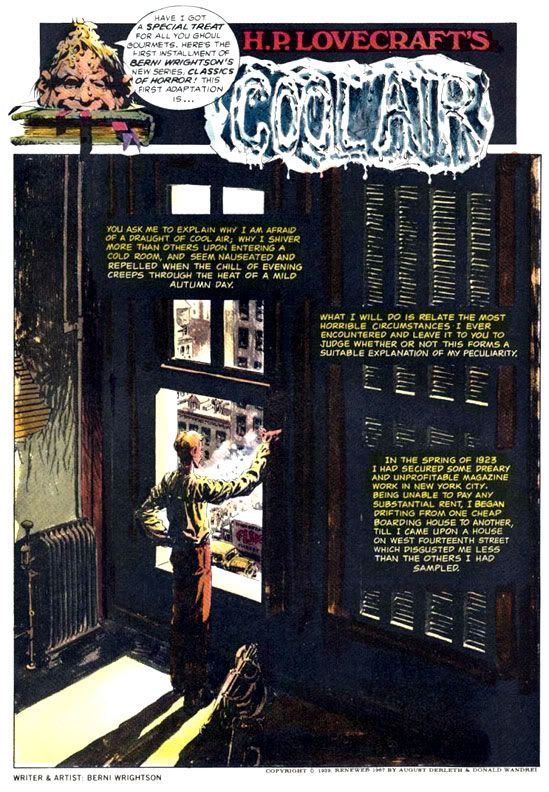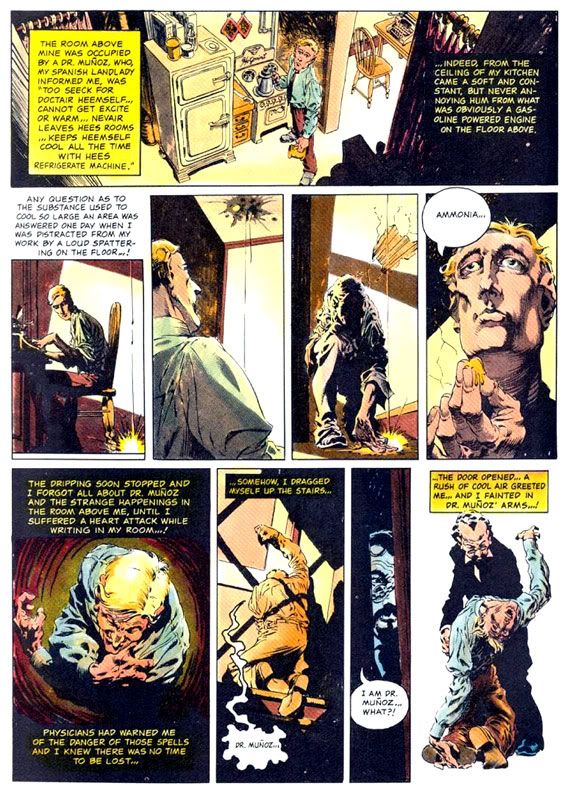Sunday, October 30, 2011
2nd Annual Spookey Month: Bernie Wrightson takes on H.P. Lovecraft
H.P. Lovecraft is strange case. His influence in horror literature is undeniable and yet he was a pretty lousy writer. When you hear one of his stories described or read a synopsis, it sounds exciting, weird and even a little frightening. Malevolent elder gods from beyond Pluto manipulating scholars into plumbing the depths of forbidden knowledge, whispering aliens hiding in the dark forested hills of Lovecraft's native New England states, a city where the inhabitants are devolving into amphibians. Then you actually read it and the experience is like tediously climbing a steep hill made up of adjectives, exclamation marks and racism. And still they fascinate me.
Comic book adaptations of his works are bit easier to take. Skilled writers eliminate the excesses and hone in on the things Lovecraft did well, and when the artist is Richard Corben or Bernie Wrightson-- someone with real imagination and the rendering chops to provide appropriately chilling visuals-- the results often transcend the source material. "Cool Air" is one of Lovecraft's shorter works and heavily derivative of Edgar Allen Poe, but those are two points in its favor. Two points in favor of the comic book version are the script and art by Wrightson, whose vision meshes so well with Lovecraft's he produces a horror fan's delight. A true classic.
It's not one of Lovecraft's mythological tales. There is no Cthulhu and no Yog-Sothoth, just a simple situation that plays itself out to its logical-- but unfortunately predictable-- conclusion. And while it's not scary by any means, Wrightson's expert adaptation make it worthwhile anyway. Lovecraft allows his rather gentlemanly prose to become a bit vague during the final scene, despite his narrator's insistance that "[b]lack terror, however, preceded me" and his use of florid adjectives like "hellish" and "nauseous," characteristic of his writing when he's really straining for effect. Wrightson just shows us, creating a shock Lovecraft might have appreciated while deploring its directness.
This story first appeared in Eerie #62 (1975), and you can see Cousin Eerie's apparently decapitated head serving as a candlestick holder there on the title page. These color images are from Berni Wrightson: Master of the Macabre #2 (1983), which is where I first read it. That comic also contains the infamous "Jenifer," which frightened me so badly I didn't sleep for two nights. You can't ask much more from a comic book than a sleepless night or two. I'm sure H.P. Lovecraft would agree. Dark Horse just published a volume collecting Wrightson's Warren work and it includes both of those stories. I don't own it yet, but be assured I will. Oh yes, I will!
I wonder what Lovecraft would have thought of this:
Subscribe to:
Post Comments (Atom)




1 comment:
When I tried to read Lovecraft for the first time for a few years ago, I was stunned that work I found essentially unreadable had such an influence on so many writers. Good writers, too!
Those Wrightson pages look nice, though.
Post a Comment